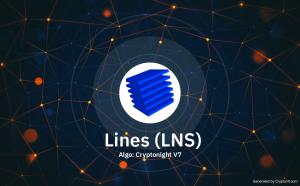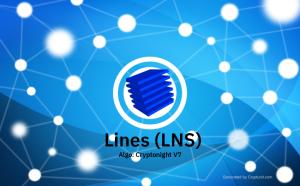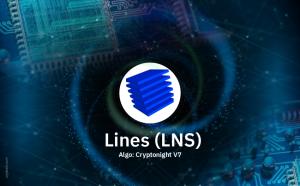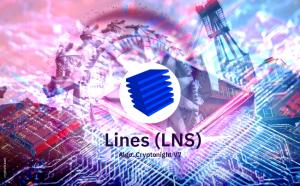Lines (LNS)
$0
(0%)
0 BTC
0 Mh/s
Hashrate
$0
0 BTC
0 LNS
Last reward
/0
Miners/Pools
No known mining pools.
Lines mining pools
| Pool Name | Merged | Fee % | Min Pay | Miners | Mh/s | Status |
|---|
Lines markets
Currently unknown
Please visit the Lines website to find out more.
Cryptunit uses data provided by CoinGeckoLines
Super-easy to use and completely anonymous cryptocurrency with ~0 fee & fast transactions. Lines wallets have simple and understandable interfaces. This helps to reduce entrance threshold for people into crypto-currencies. And its just more enjoyable to use. In addition, you can easily send LNS from one device with Lines Wallet to another. It is super-fast, free and cool.
| Ticker | LNS |
| Announced | Feb 2018 |
| Forked from | |
| Hashing algo | CN V7 |
| Block time | 0 sec |
| Decimal places | 7 |
| Last reward | 0 |
| Current height | 0 |
| Historical data | JSON |
| CN V7 | 27. Oct 2018 |
Total supply: 1,000,000,000 LNS
Hash algorithm: CN Variant 1
Block time: 120 seconds
Difficulty: Automatically adjusted for each block
Premine: 4% official premine for Airdrops, Bug Bounty Program, Ad & devs reward
Super-easy to use and completely anonymous cryptocurrency with ~0 fee & fast transactions
Transaction fee is around zero LNS. And now lines is one of the most profitable currencies for transfers. We like it.
Lines wallets have simple and understandable interfaces. This helps to reduce entrance threshold for people into crypto-currencies. And it's just more enjoyable to use.
In addition, you can easily send LNS from one device with Lines Wallet to another. It's super-fast, free and cool. Payments via NFC and messenger apps to be implemented.
About privacy
We believe that the future is impossible without compliance privacy, true decentralization and openness of the financial institute.
Lines is based on one of the most secure algorithms available today — CryptoNote. Hiding information from the outside about your transactions and balances
is one of its features. In addition, any transfer requires confirmation of several blocks before the transaction is released which is a standard procedure for protecting against a double–spending fraud.
 CryptUnit
CryptUnit













